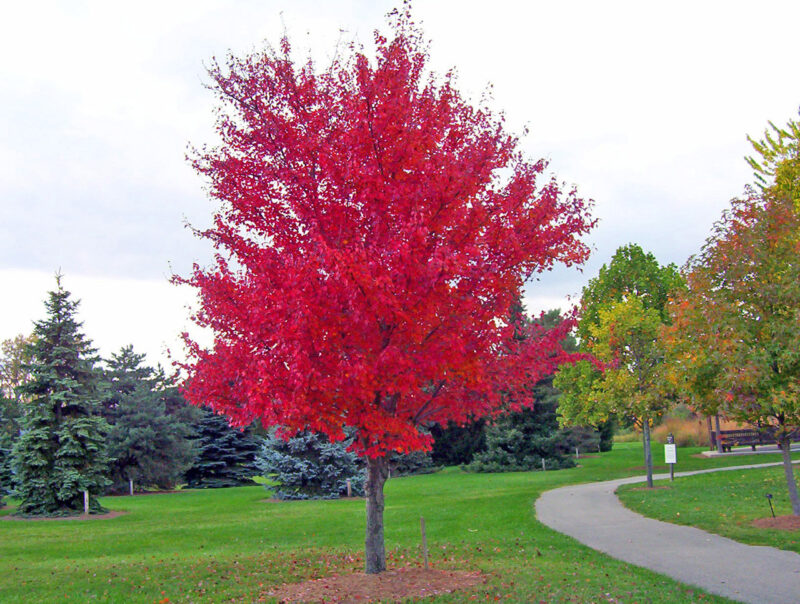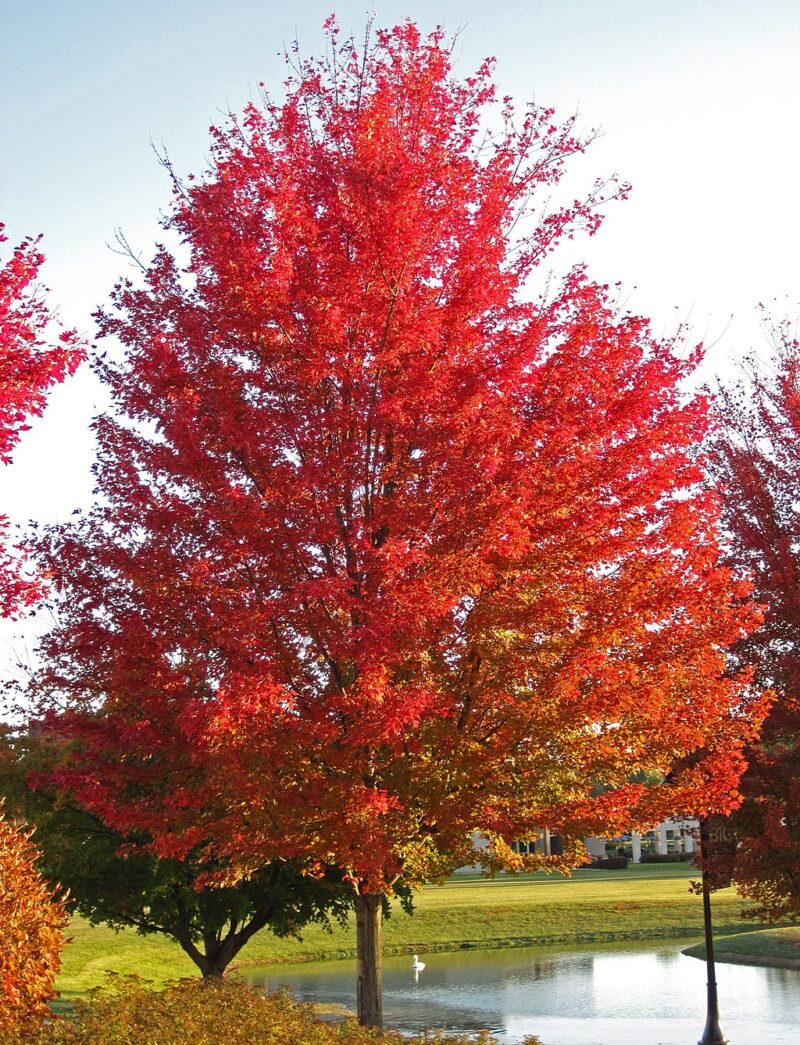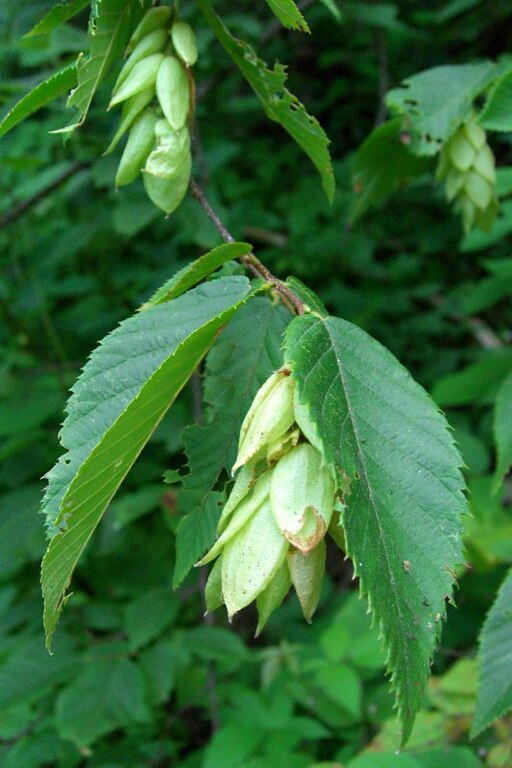I want to tell you a true story. A friend of mine living in Zone 4 tried to grow a red maple, but it didn’t survive its first winter.
Another friend living in colder zone 3 also planted a red maple that same year, and 6 bitter winters later, it is still doing fine. The books say red maple is hardy to zone 3. So how can this be? The answer, my friend, may simply be provenance.
If you’re a northern homeowner or gardener, you need to know about provenance. After all, it is a major limiting factor to the plants we can grow in our yards and gardens. If you’re not familiar with the concept, you are not alone; most northerners have never even heard of the word.
The dictionary roughly translates the word provenance as “the place of origin”. In the case of plants, this refers to where a particular plant came from, and more specifically, a tracing of the lineage of that plant. So, a discussion of provenance is a discussion about origins. I’ll tell you why this matters to you as a northern homeowner or gardener.
It Starts At The Beginning
If you were following the Northscaping e-Zine Showcase series a couple of months ago on Plant Propagation, you will have learned that new plants are created in a number of different ways. There are the “sexual” means of propagation, i.e. from seeds, and the “asexual” means, also known as vegetative propagation or cloning. All of the plants in your local nursery were produced one of these two ways.
For the most part, in nature plants reproduce sexually. Flowers are pollinated, which produces seeds, which fall from the plant and germinate to produce new plants, which then repeat the process.
But think about this; plants are not mobile, save for maybe some local migration of seeds away from the parent plant thanks to birds, wind, or water. And yet, they occur over a wide range, some of them across entire continents. How did this come about?
The answer is that it took a very long time for these plants to spread across their native range, time usually measured in thousands of years. Over this period, individual plants also evolved, with the result that some plants which were more suited to particular areas would thrive while others would fail.
As the plants spread, some were able to adapt to local conditions through evolution, but these adaptations were not carried back to the species. Over time, you can see how regional variations would occur within the same species as they evolved to adapt to the particular challenges of each new area they spread into.
One of the primary adaptations a species would have to make over a large geographic area is to climatic variations. If you could imagine a species whose ultimate range stretched from coast to coast and from Canada to the Gulf of Mexico, it is easy to see that those plants which had to survive in Canada would have had to develop the inherent ability to handle cold winters and short growing seasons, while the plants which spread into the deep south would have had to deal with intense heat rather than the cold. Each had to adapt, but these adaptations were different.
Some plants that were able to expand their range may have been genetically predisposed for that wide a range and didn’t need to adapt further.
They were at the same time hardy enough to survive the northern winters and tough enough to survive southern summers as well. These plants are the ones that don’t exhibit provenance, and a plant from a southern population will do just fine growing in the North.
Other plants weren’t born so lucky but were able to evolve attributes that helped them overcome their local challenges. And thus localized populations of plants emerged within individual species. Some were similar to the original parent species, others were markedly different.
The ones that exhibited visible physical differences across their range were given the title of “subspecies”, which is often identified as “sub.” at the end of their botanical names. This meant that the botanists who were cataloging a particular species observed the local or regional differences and decided to make note of them.
Read Also:
- Rare Plants for Northern Yards and Gardens, Showstoppers Sure to Keep Them Guessing!
- Sowing the Seeds of Success: A Primer for Starting Seeds Indoors
- Indoor Germination Tips, Seed Starting for Short Seasons
Along Came The Botanists
For the most part, however, botanists only cataloged visible differences between a local population of a species and the general species itself. If no visible differences were observed by the botanists doing the naming, no subspecies were identified.
Hardiness, which describes a local population’s ability to survive a particular severity of winter, isn’t physically visible. And since the botanists doing the cataloging couldn’t see hardiness, it generally wasn’t cataloged.
Unfortunately for northerners, differences in hardiness matter. This is why a red maple may not be the same as a red maple if one came from a seed source in Alabama and the other from a seed source in Ontario.
In my opinion, if these botanists really had cared about northerners, they would have uniquely identified all subspecies which exhibited notable differences in hardiness. But, they didn’t, and hence this article.
I think you can see what’s coming next. You walk into a nursery and ask to buy a red maple, which is typically grown from seed (except for the named cultivars).
But do you know where that seed came from? Was the seed from a hardy strain of plants native to the northern extent of their range, or from a southern source where hardiness wasn’t nearly as critical in the evolution of the plant? Does the nursery know?
It might surprise you to learn that the better northern nurseries and garden centers do in fact know the provenance of their plant stock because it affects the success of the plants they sell in their particular region. In fact, some of the best will grow the plants themselves from a locally tested and proven seed source, even if the species itself isn’t native.
So how does this relate to cultivars, which are the selected and named varieties of plants? Most cultivars are vegetatively propagated, or cloned, because that’s the only way the desirable traits for which they were selected can be carried through to the offspring with certainty.
Budding, grafting, cuttings, and tissue culture; are all types of vegetative propagation and indicate that the plant is genetically identical to its parent source. Since both provenance and hardiness are genetic traits, they will always be passed on to the offspring when vegetatively propagated.
So, as you can imagine, if that particular cultivar originated in a southern population of the plant, it may not be as hardy as a cultivar that originated from a northern population. A handful of cultivars have in fact been selected for their improved hardiness, but most are chosen for other reasons such as flower or leaf color, size, and shape, with hardiness not even a consideration.
As a result, a cultivar may be as hardy, more hardy, or more often than not less hardy than the general species. And since the North is usually a boundary for the extent of a native range, it’s almost always the case that selected cultivars are less hardy. It’s a sad but true fact of life for northern gardeners.
Finding Provenance
Now let’s apply all of this new-found knowledge to you, the northern homeowner or gardener. You’re going to the nursery or garden center to buy a plant. How will provenance affect your decision?
First of all, provenance is intractably tied to hardiness for northerners; that’s the aspect of provenance that we’re most concerned with since we need to know that the plants we bring into our yards are in fact hardy for our location.
As with hardiness, therefore, provenance matters very much when it comes to trees, somewhat when it comes to shrubs, and not much when it comes to perennials. I’d recommend using the ultimate height of the plant as a guide; if you expect it to grow much taller than your typical winter snow depth, then provenance matters.
You first need to know how the plant was propagated, so be sure to ask someone who knows (and finding someone who knows the answer to this question might be harder than you think…).
If it was propagated from seed, then inquire where the seed source was originally from, and whether it was a source known to be hardy in your locale, or at least hardy to your hardiness zone. A good nursery should be able to provide that information. If they don’t, be aware that you’re taking a chance with this plant.
Some plants tend to exhibit provenance much more than others, especially those that occur over a wide native range. When purchasing a maple, walnut, ironwood, beech, oak, or ash tree, provenance matters. It’s the same with certain shrubs like weigela, bearberry, redbud, or serviceberry.
If you’re purchasing a named variety that is vegetatively propagated, then the question becomes much simpler; what is its hardiness rating? If it’s the same as your hardiness zone or lower, you should be safe to purchase it.
So provenance matters to northerners because it gives a better guarantee that a particular plant will survive your winter climate. Hardness ratings are only part of the story for any plant that’s grown from seed; you need to know its provenance as well to be sure.
And back to the red maple story for a moment… Depending on its seed source or the specific cultivar, you can have a red maple that’s hardy to zone 3, or zone 4 at best, or even zone 5 and no better.
There may have been other factors at play, but I’ll bet a dozen donuts that my zone 4 friend picked up one of those zone 5 maples, while my zone 3 friend in fact found a zone 3 maple. That’s the end of the story, and now you know!
Perla Irish, who is more familiarly known as Irish, is the Content Manager at newfld.com. She loves following trends around home and garden, interior design and digital marketing. Through this blog, Irish wants to share information and help readers solve the problems they are experiencing.




